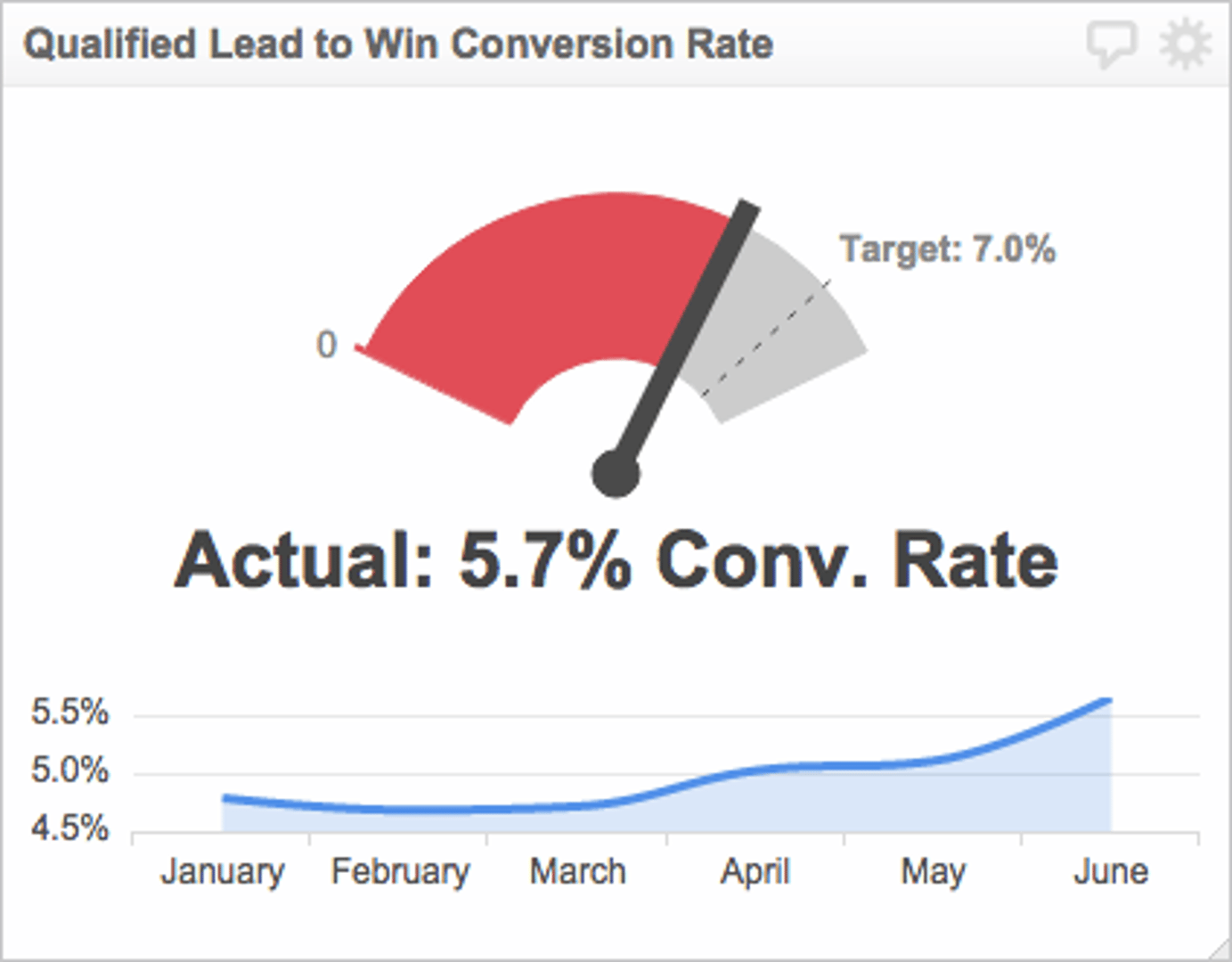Sales Conversion Rate
Measure of the effectiveness of your sales team at converting leads into new customers.
Track all your Sales KPIs in one place
Sign up for free and start making decisions for your business with confidence.

What is Sales Conversion Rate?
The Sales Conversion Rate measures the effectiveness of your sales team at converting leads into new customers. It’s an important metric for aligning your sales and marketing team as both teams will use this metric to determine the quality of leads.
The process for generating leads is the responsibility of marketing, and that team will engage in lead generation activities. For example, a marketing team will organize and execute a conference sponsorship (often in coordination with sales) to generate sales-ready prospects. Once marketing qualifies those leads, it’s the responsibility of sales to convert those leads into paying customers.
Perhaps marketing is able to generate 100 leads for sales, and after working with those leads sales is able to win 10 new customers. That is a 10% conversion rate. The real question is whether this is good or bad. Ultimately, this depends on your past historical performance and industry benchmarks. 10% sales conversion rate may be stellar or it may be terrible. It depends what you sell and the market to which you sell.
How to calculate sales conversion rate
The sales conversion rate formula helps you calculate the percentage of leads or visitors who complete a desired action, such as making a purchase, signing up for a newsletter, or downloading a resource, relative to the total number of leads or visitors during a specific time period.
Sales Conversion Rate = (Number of Successful Conversions / Total Number of Leads or Visitors) x 100
How often to report on sales conversion rate
Weekly, Monthly
Who uses the sales conversion rate metric?
Sales Managers, Executives
How to measure sales conversion rate
Modern sales and marketing is wrestling with an ancient challenge: how to attribute leads and prospects to a particular marketing activity or channel. Even the most advanced attribution models leave room for error, since prospects may be influenced by dozens of online and offline factors. Word of mouth, for example, is nearly impossible to track, though metrics such as NPS or viral coefficient are a good proxy for this metric.
In most sales-marketing funnels, conversion rates are tracked by measuring the number of qualified leads compared to the number of new wins. This can be done by campaign, by program, by channel, or left at a high-level to encompass all leads.
An effective way to measure conversion rates is to analyze progress through a discrete funnel with defined stages. For instance, looking at marketing captured leads (those with an email or known name) versus marketing qualified leads (those that marketing believes are ready for sales engagement). This is often called a lead or customer lifecycle. Lifecycles are useful for measuring conversion rates by giving both sales and marketing a common frame of reference for the buyer’s journey. Additionally, the SaaS Magic Number helps you measure overall sales and marketing spend efficiency.
Here’s an example of a lead lifecycle report.

Related Metrics & KPIs



